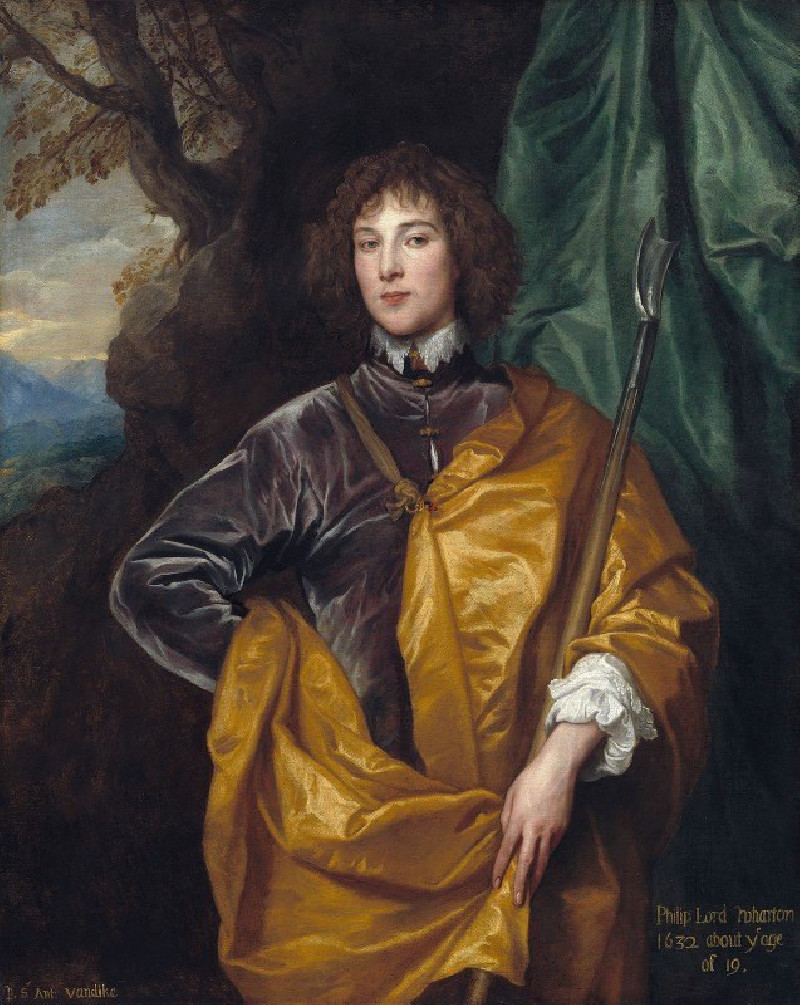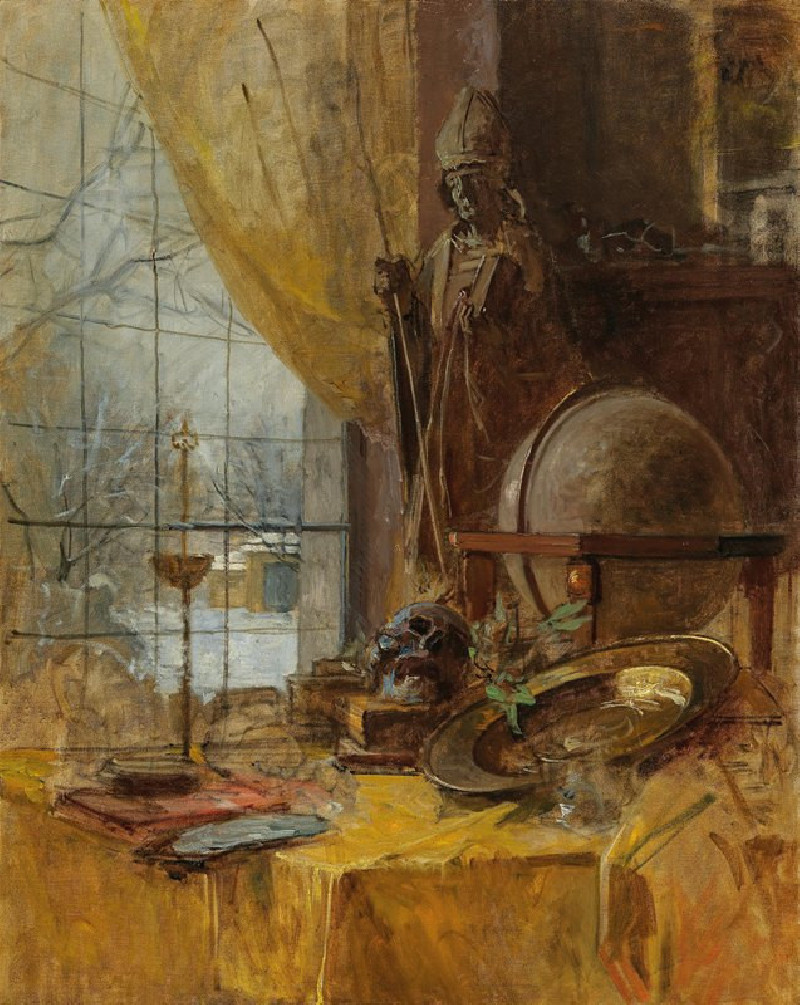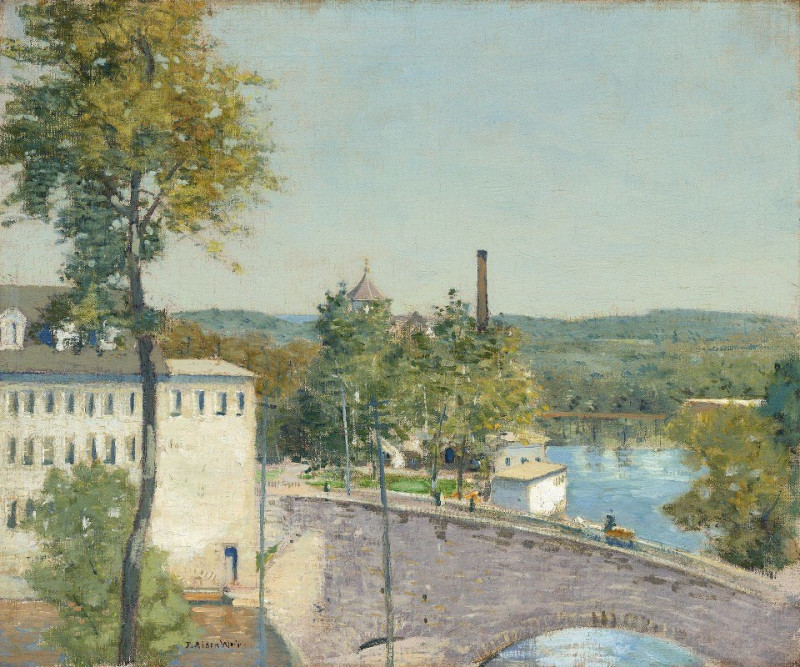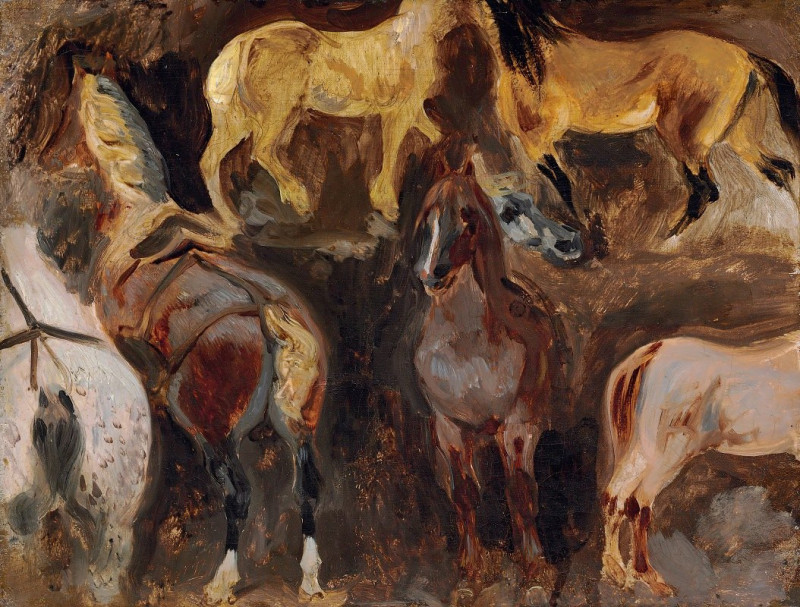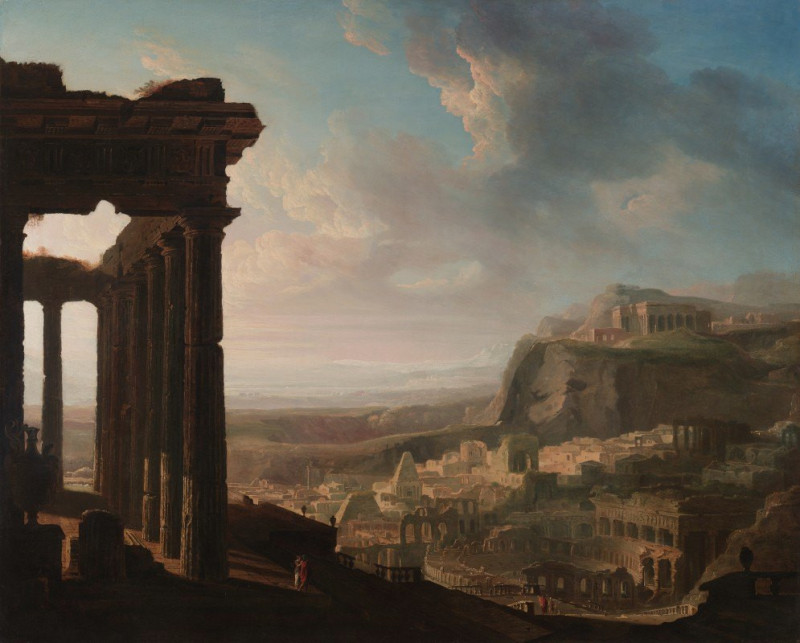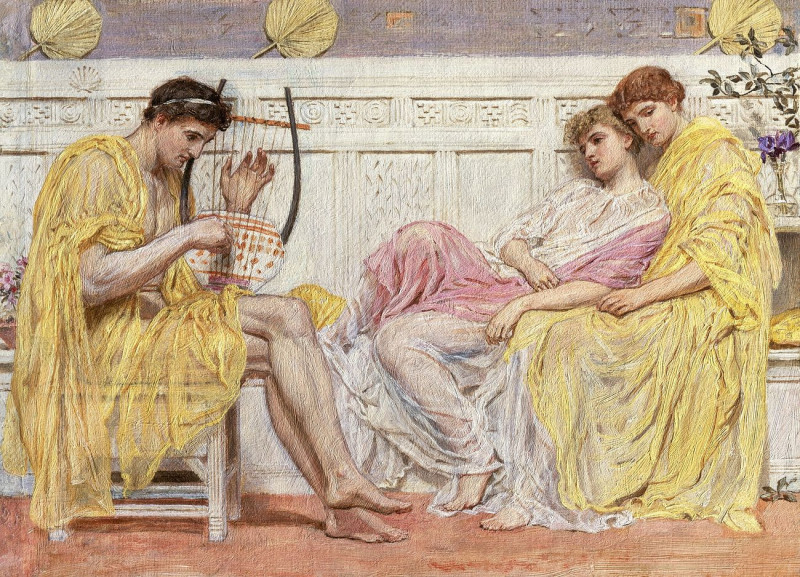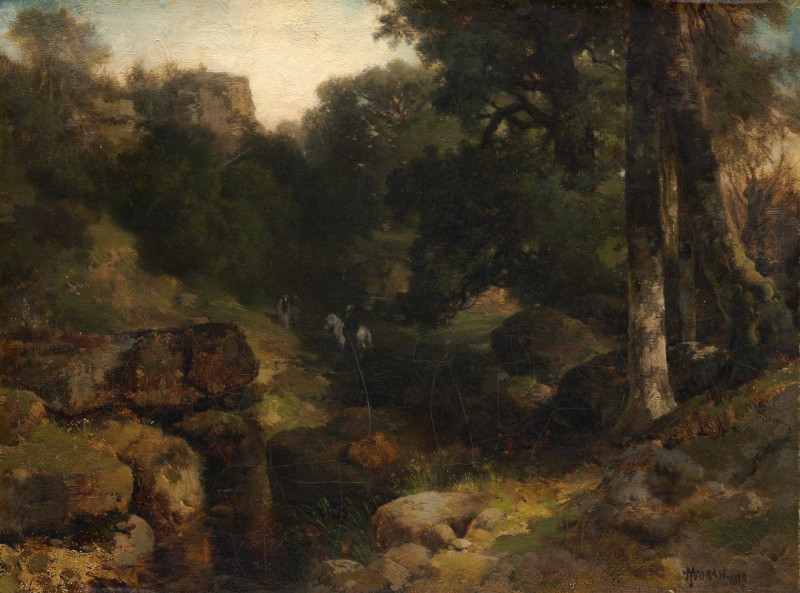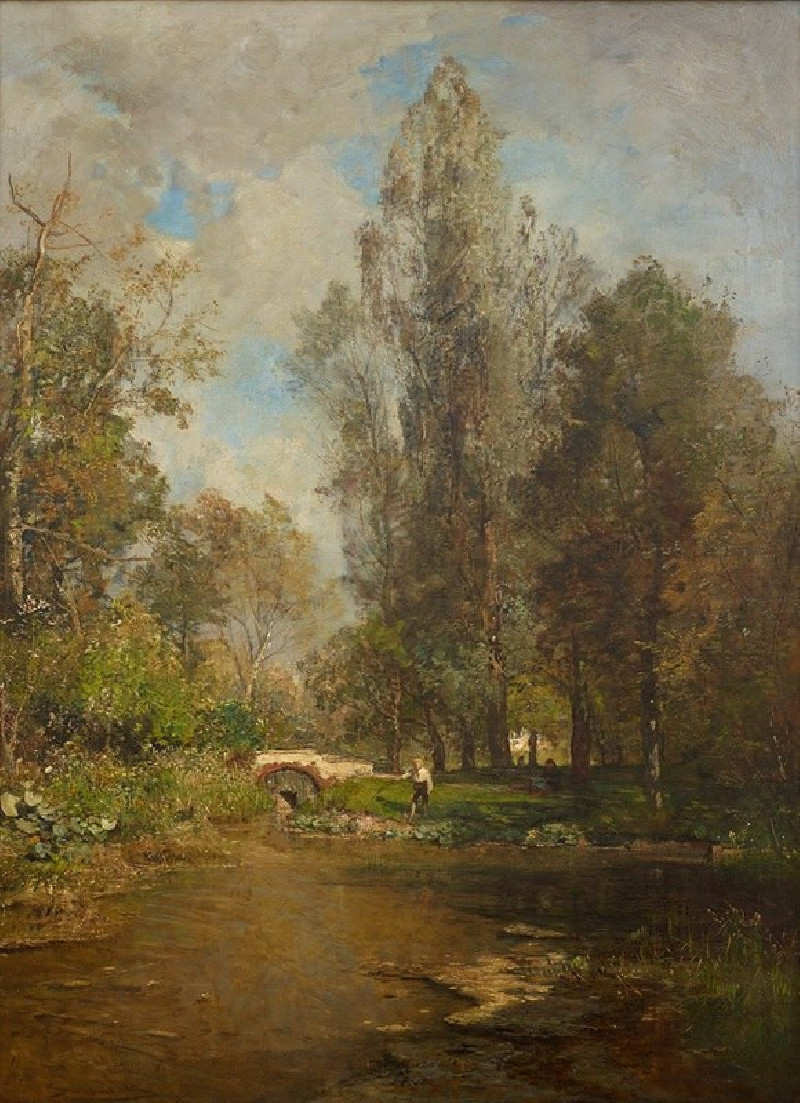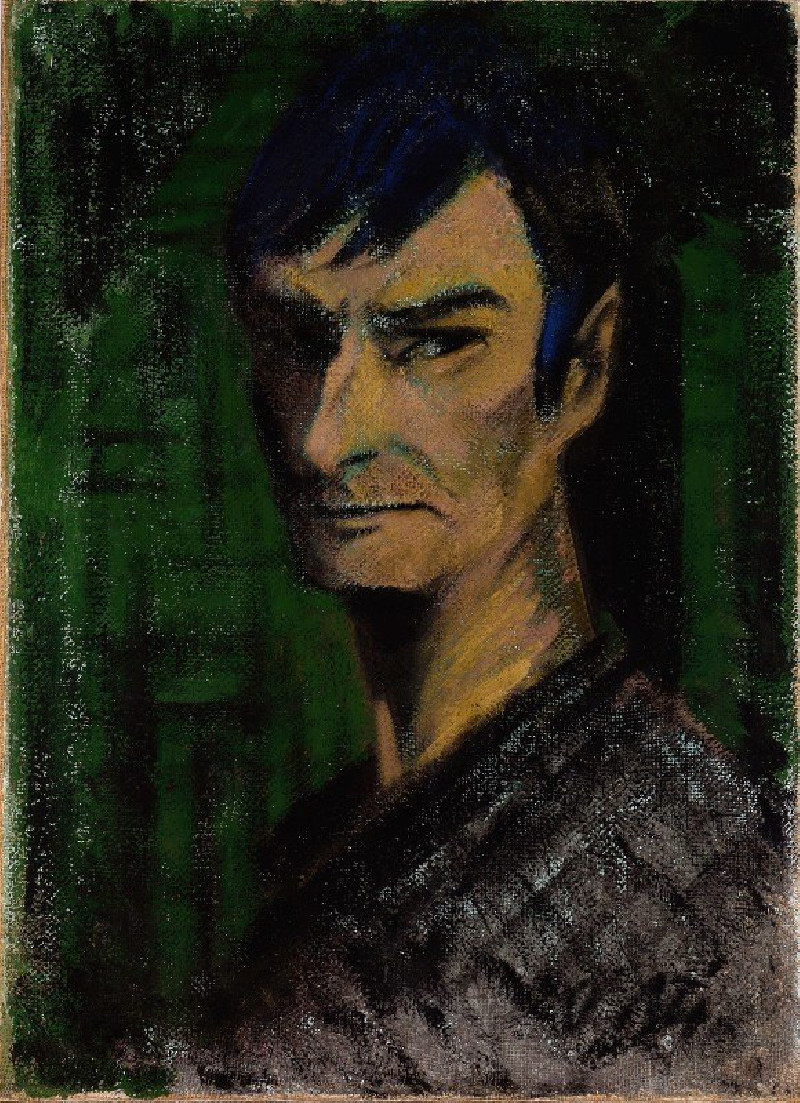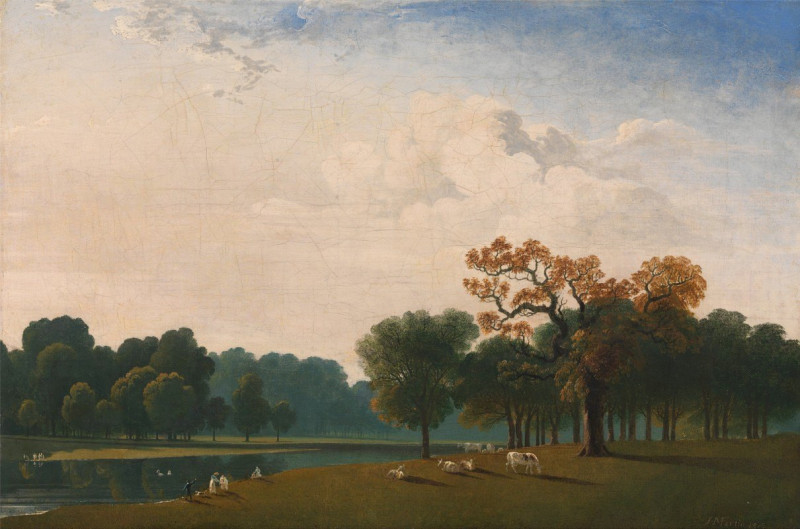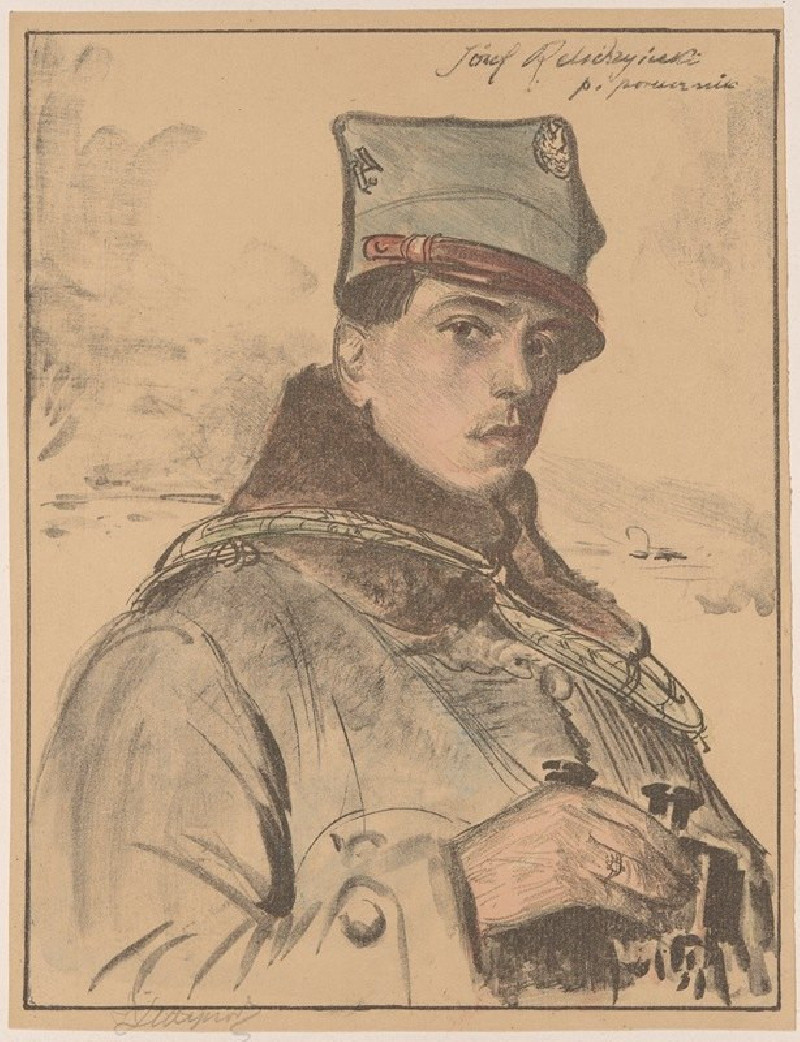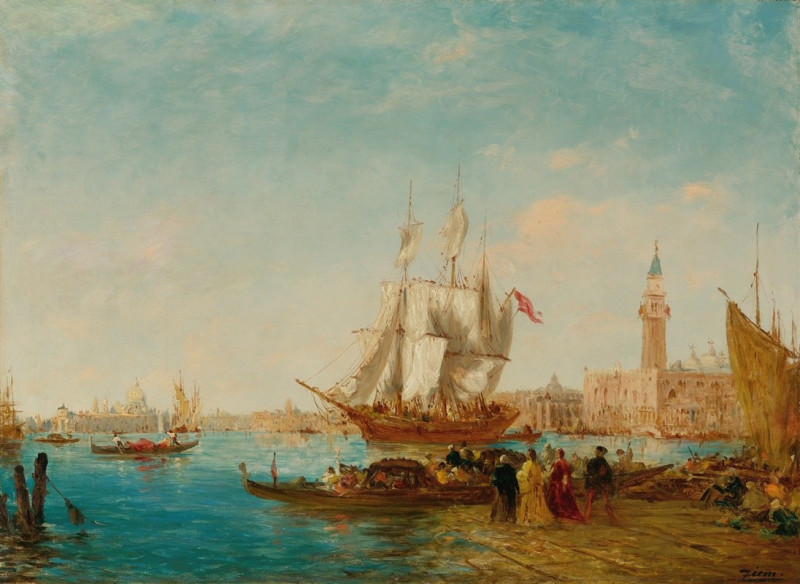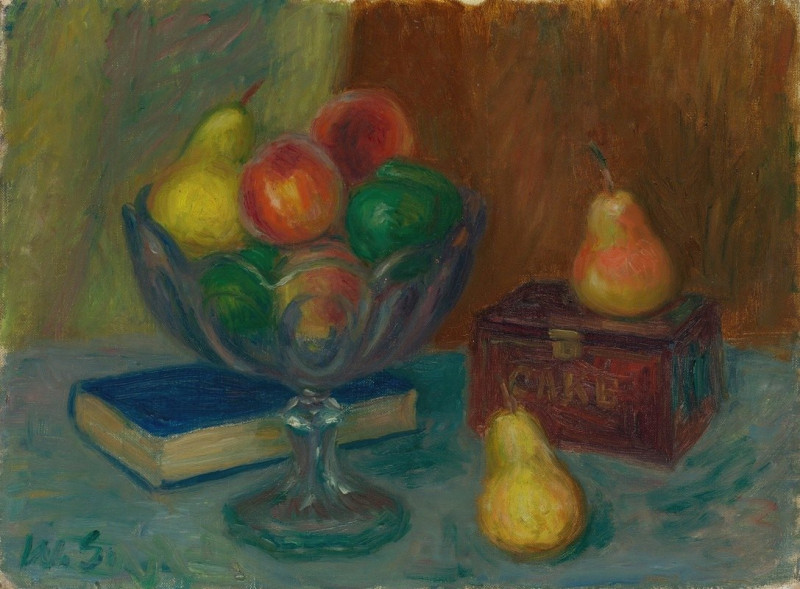Philip (Lord Wharton_1632)
Technique: Giclée quality print
Recommended by our customers
More about this artwork
"Philip, Lord Wharton" by Anthony van Dyck, painted in 1632, is a compelling portrait that captures the essence of its young noble subject. In this painting, Lord Wharton, approximately 19 years old, is depicted with a commanding presence, standing confidently against a richly textured backdrop of a draped green curtain and a distant landscape.The subject's attire is particularly striking, consisting of a luxurious, gold-colored silk robe with a deep, contrasting purple undergarment. This combination not only highlights the status and wealth of Lord Wharton but also showcases Van Dyck's skill in rendering different textures and reflections of fabric. The white cuff peeking from under his sleeve adds a touch of refined detail.Philip Wharton holds a walking stick, suggesting perhaps an air of readiness for travel or adventure, a common theme for portraits of the era which often alluded to the sitter's active involvement in exploration or governance. His direct gaze and the slight opening of his lips impart a lifelike quality and a sense of the sitter's personality—proud, perhaps contemplative, yet undeniably youthful.Van Dyck, a master portraitist of the 17th century, employs a harmonious blend of colors and meticulous detail to enhance the dignified demeanor of his subject. This painting not only serves as a stunning visual biography of a young lord but also as an exemplar of Van Dyck's profound ability in portraiture, reflecting the social and historical context of the era.
Delivery
Returns
Sir Anthony van Dyck (1599 – 1641) was a Flemish Baroque artist who became the leading court painter in England after success in the Spanish Netherlands and Italy.
The seventh child of Frans van Dyck, a wealthy Antwerp silk merchant, Anthony painted from an early age. He was successful as an independent painter in his late teens, and became a master in the Antwerp guild in 1618. By this time he was working in the studio of the leading northern painter of the day, Peter Paul Rubens, who became a major influence on his work.

